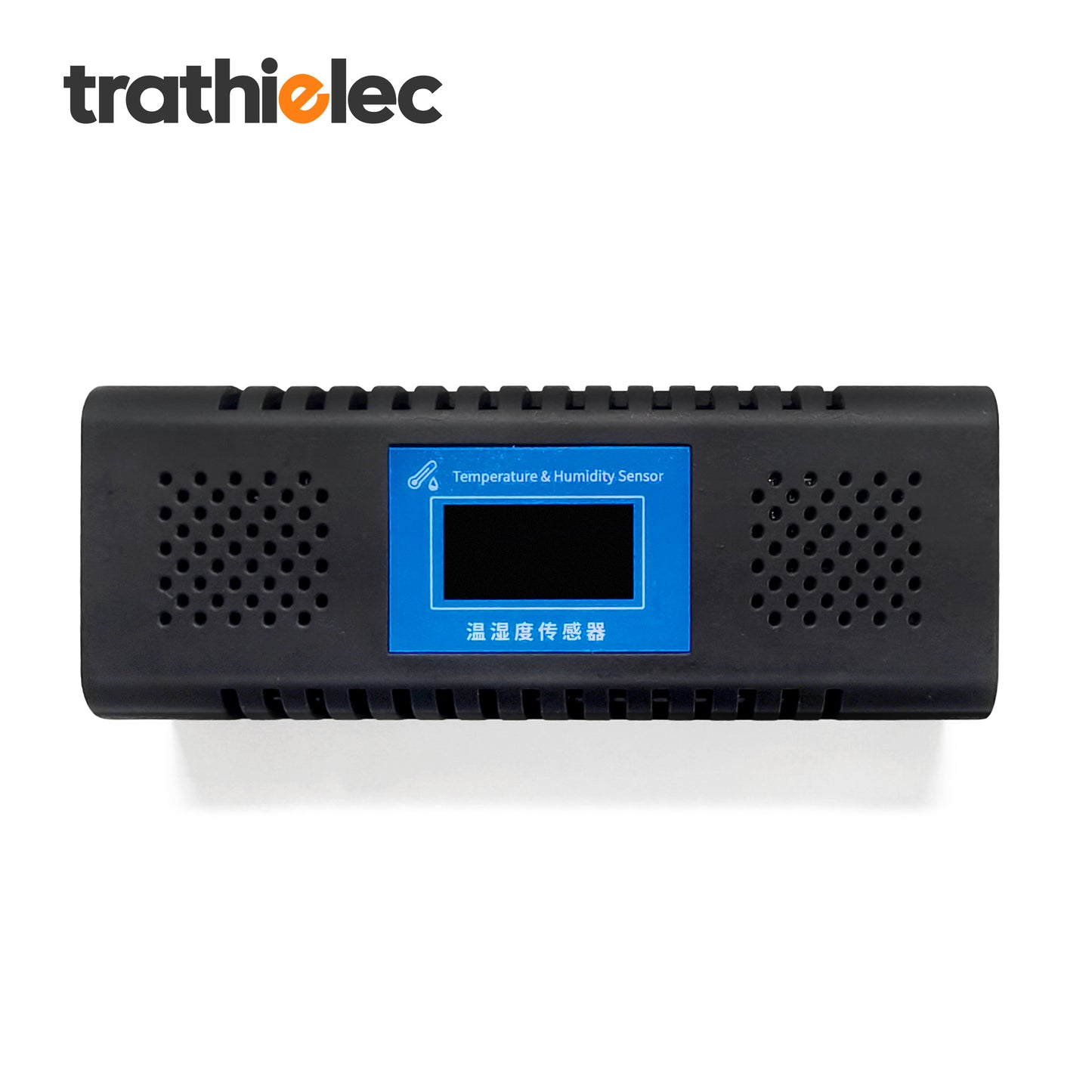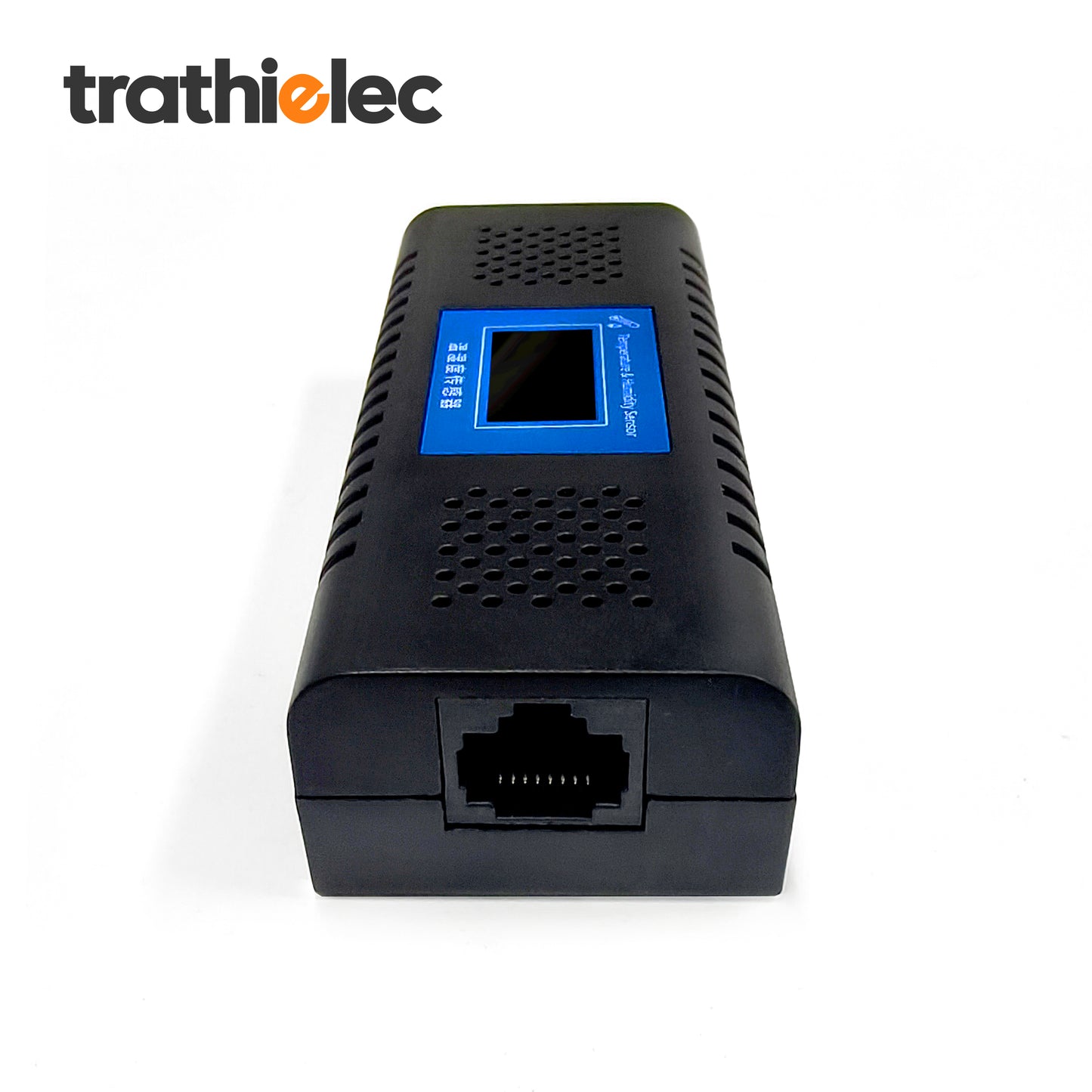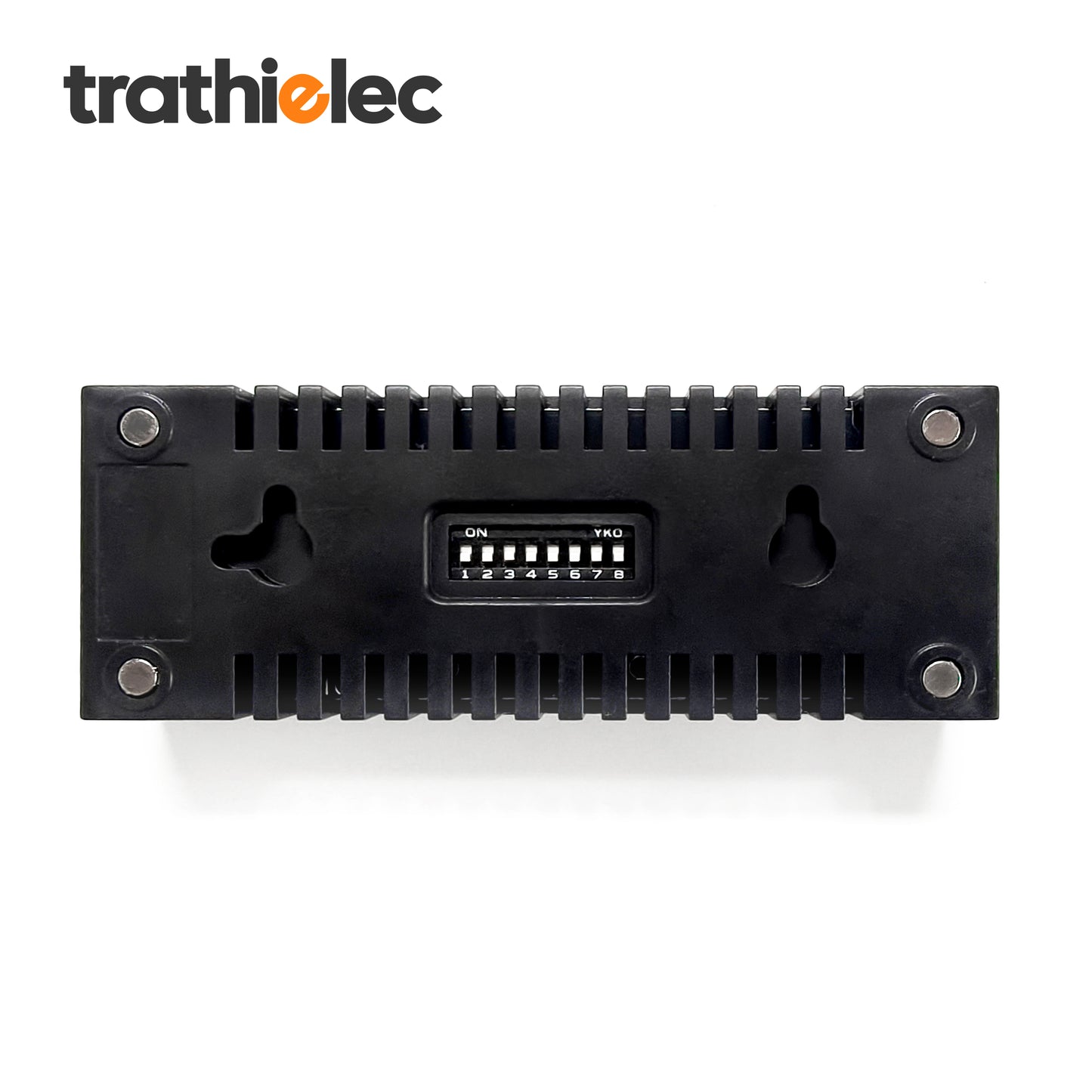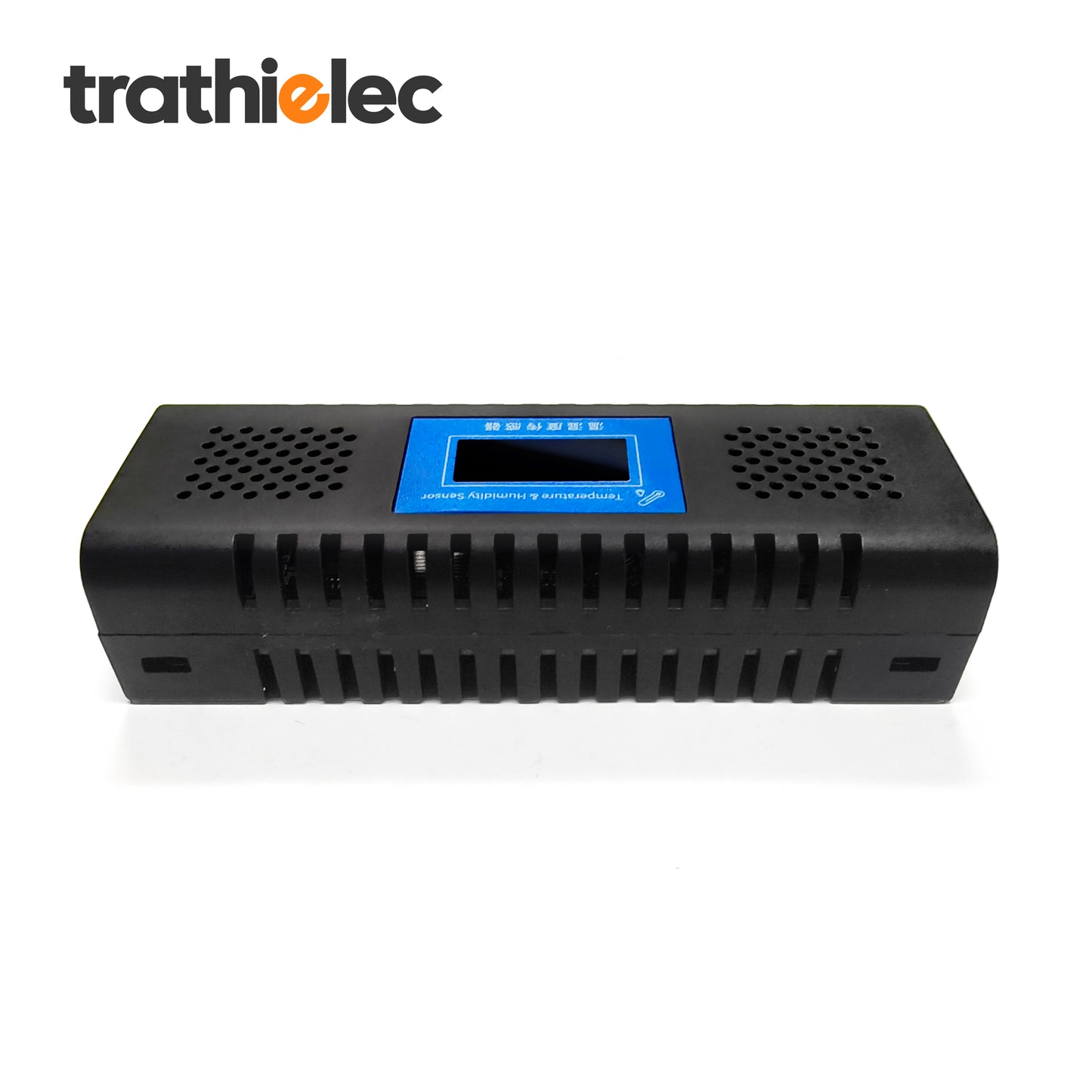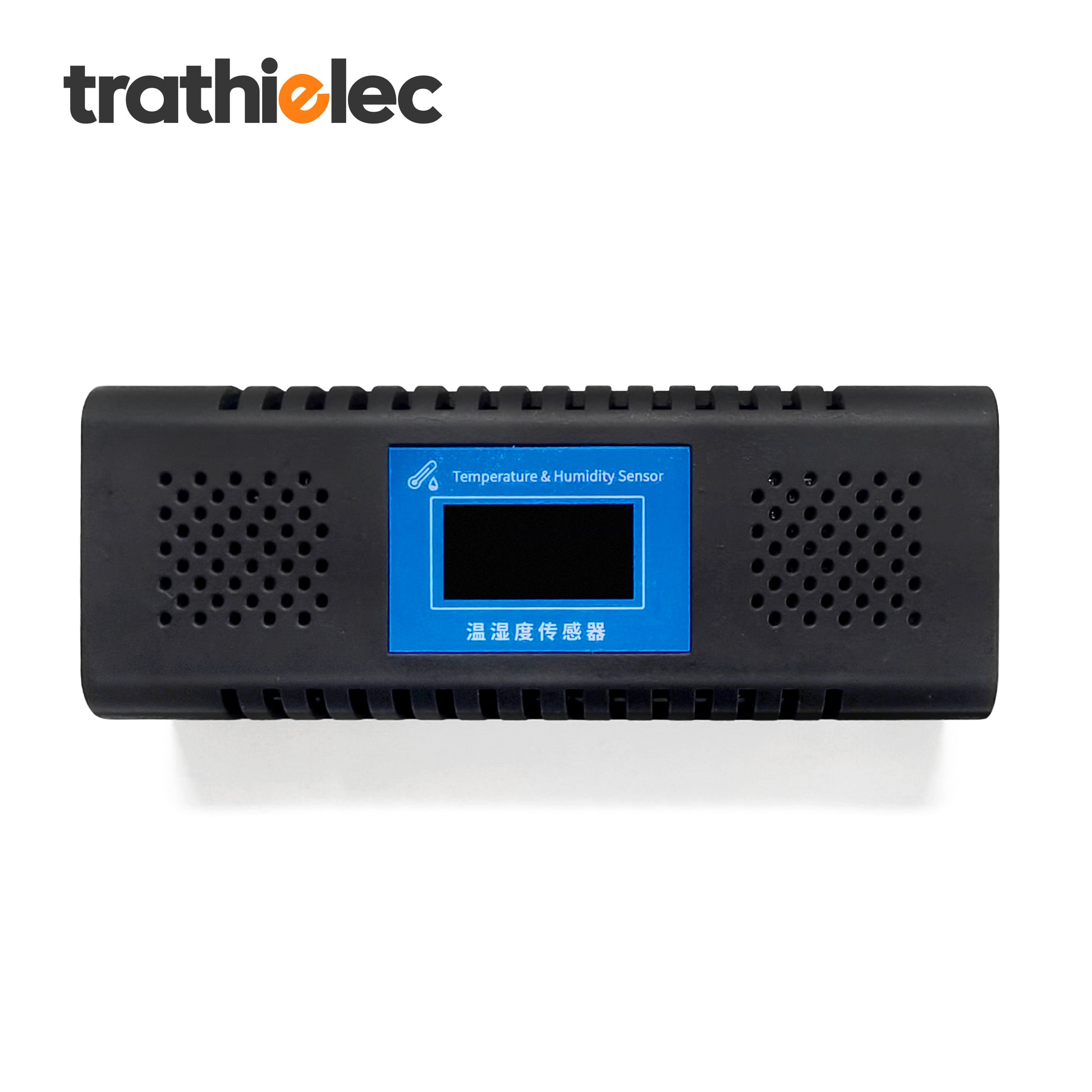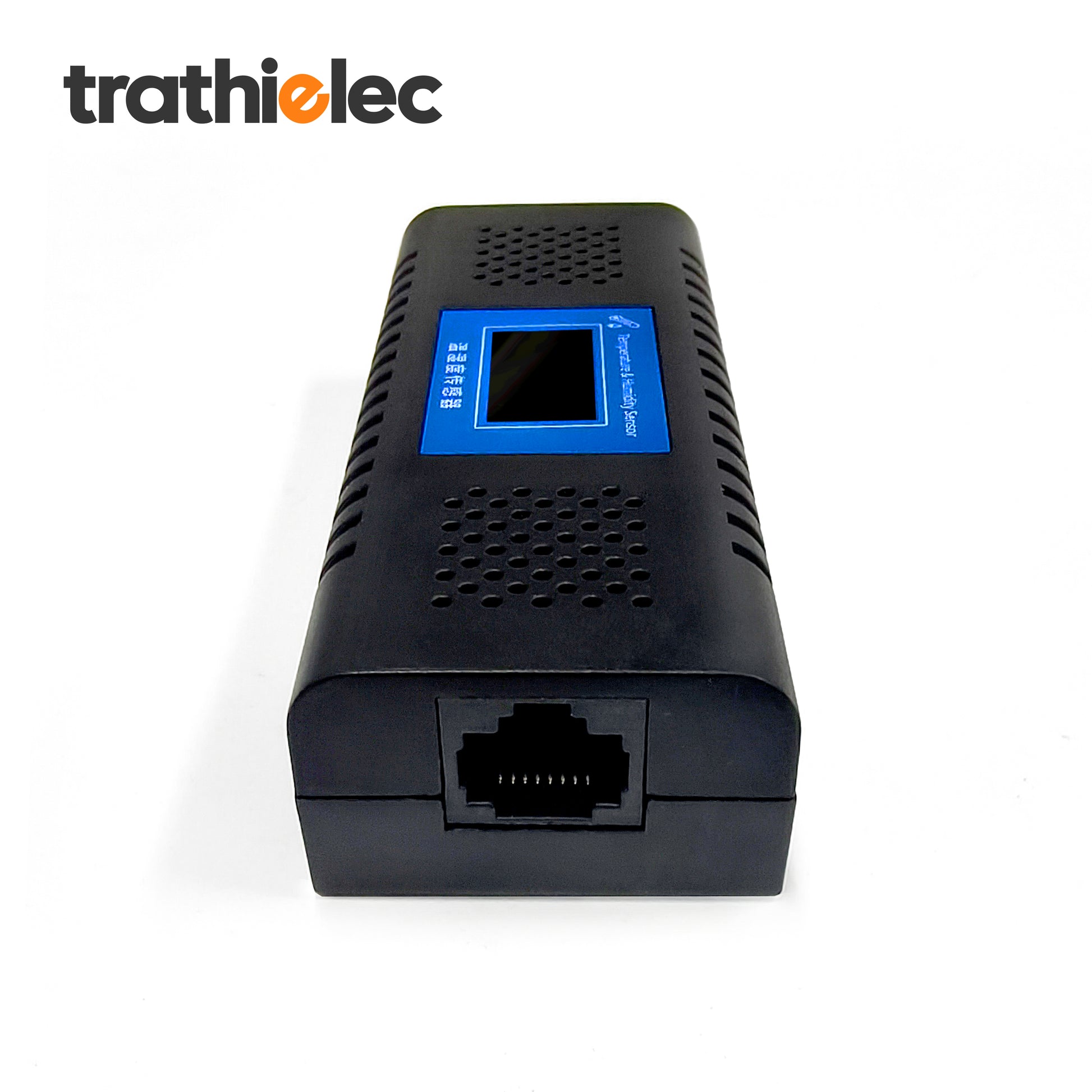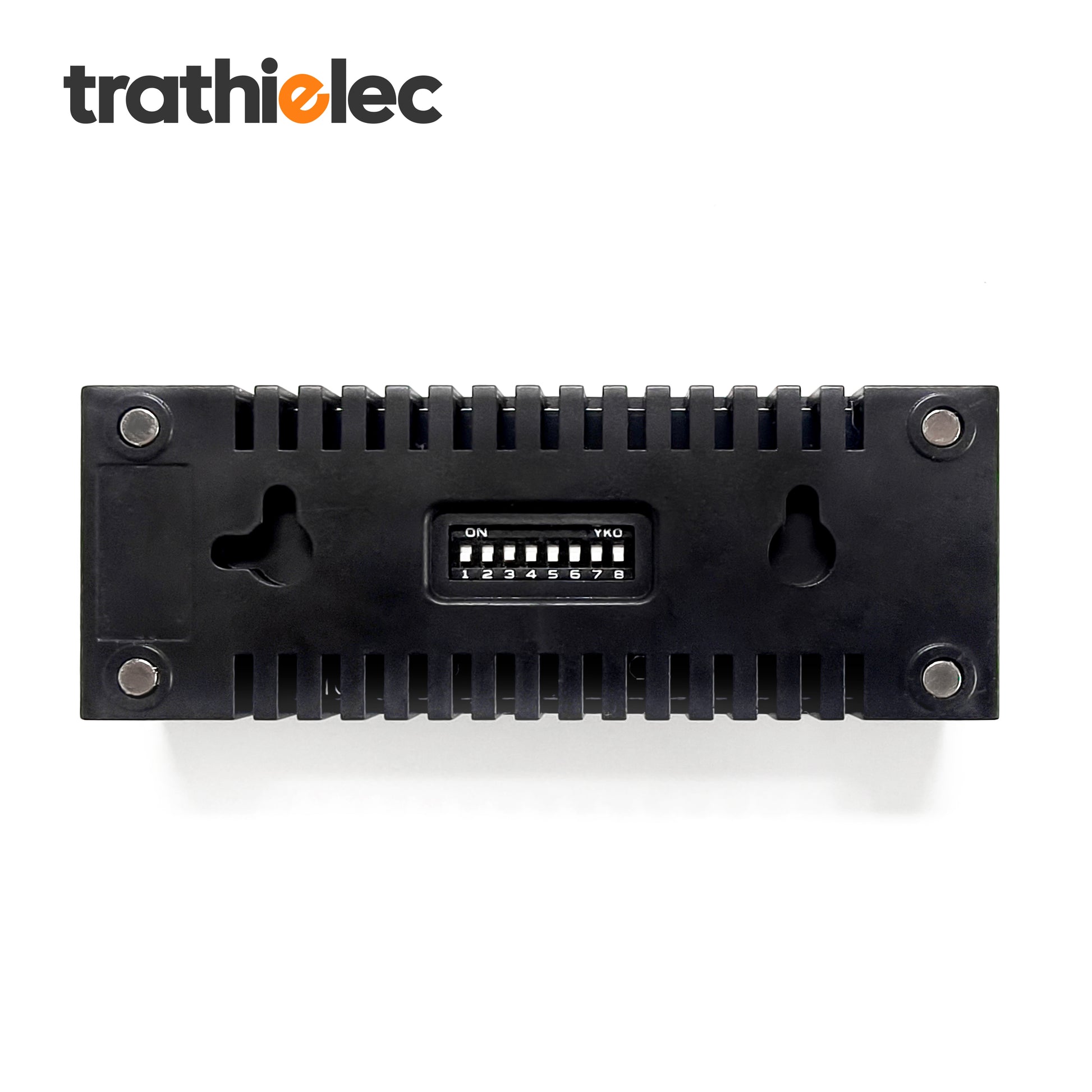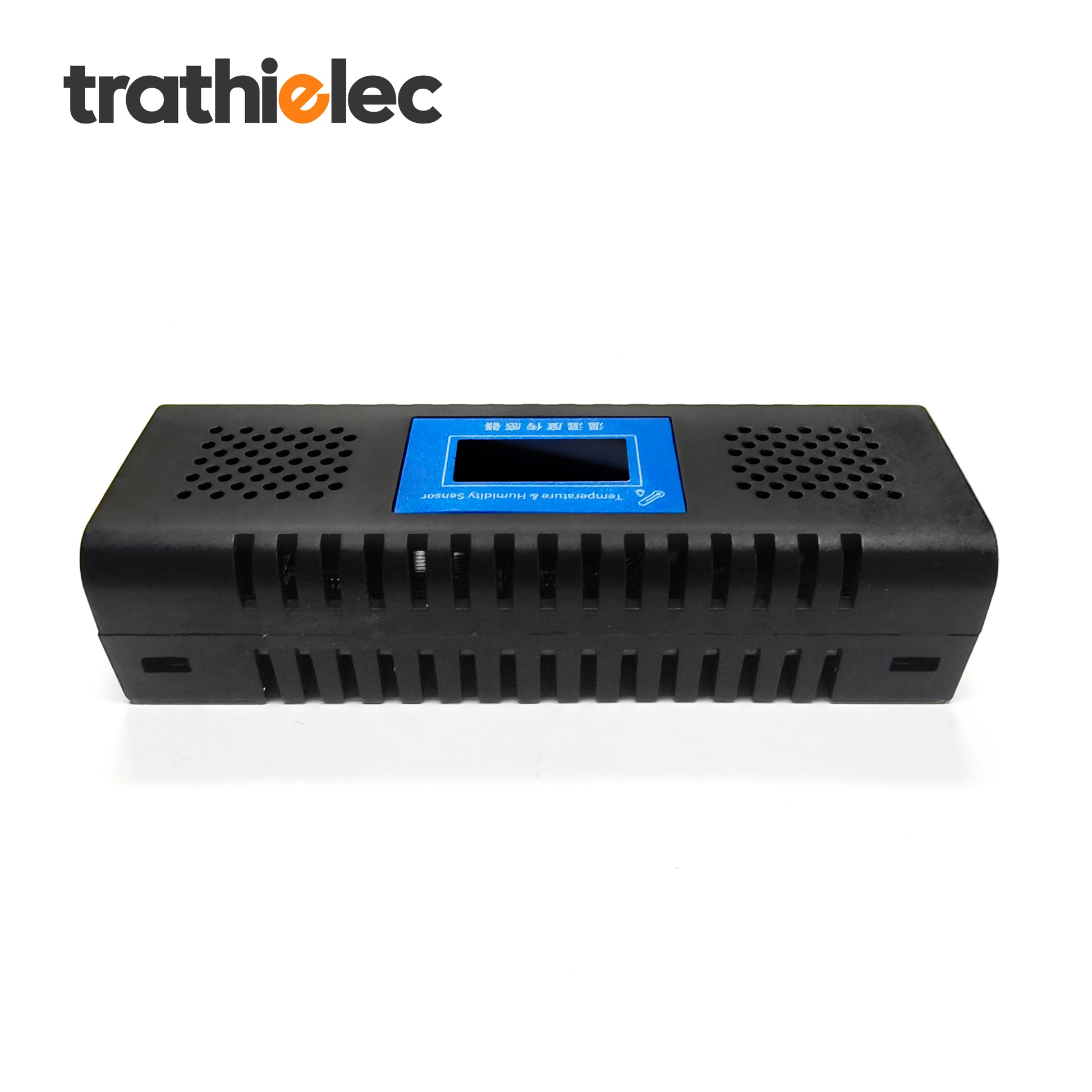Trathielec
RS485 cabinet temperature and humidity sensor
RS485 cabinet temperature and humidity sensor
Couldn't load pickup availability
RS485 Cabinet temperature and humidity sensor manual

The transmitter has a built - in temperature and humidity sensor with a high - precision temperature and humidity sensing chip, featuring a fast response speed. It is equipped with a RS485 communication interface and adheres to the standard Modbus - RTU communication protocol, with a maximum communication distance of 2000 meters. The device has two network ports, allowing for cascading via network cables, and it can simultaneously supply power to the next - level devices. There is a DIP switch that enables quick setting of the address and baud rate. On the back, there are four strong magnets, so it can be directly attached to the cabinet or installed on the wall, greatly improving the installation efficiency. An OLED screen display is optional, which can display the temperature, humidity, address, and baud rate in real - time. This product is widely applicable to places such as communication machine rooms, warehouses, buildings, and libraries.
Specification
|
DC power Supply (default) |
10-30vdc |
|
|
Maximum power consumption |
0.5W(24V power) |
|
|
Precision |
Humidity |
±5%rh (60%rh, 25C°) |
|
Temperature |
±0.5 C° (25C°) |
|
|
Resolution |
Humidity |
0.1%rh |
|
Temperature |
0.1 C° |
|
|
Transmitter working environment |
-30 C° ~+75 C°, 0%RH~95%RH |
|
|
Long-term stability |
Humidity |
≤ 1%rh /y |
|
Temperature |
≤ 0.1 C°/y |
|
|
Response time |
Humidity |
≤8s (1m/s wind speed) |
|
Temperature |
≤25s (1m/s wind speed) |
|
|
Output signal |
RS485 (Modbus RTU protocol) |
|
|
Refresh time |
1s |
|
Size:

Installation
Magnetic - adsorption installation

Wall - mounted installation


Setup device address and baud rate by DIP switches
There are a total of 8 DIP switches. The first 6 DIP switches are used to set the address, and the last 2 are used to set the baud rate. When a DIP switch is pushed up, it is ON, and when pushed down, it is OFF. The device address can be set in two ways: software configuration and DIP - switch setting, and only one method can be chosen to set the address.
ON represents 1, and OFF represents 0. When all six DIP switches are set to the “OFF” position, the address can be set using the configuration software. When one of the six DIP switches is in the “ON” position, the device address can only be the address represented by the DIP switches, and the address set by the software is invalid at this time. The address range set by the DIP switches is from 1 to 63.
|
Slave ID |
1 |
2 |
3 |
4 |
5 |
6 |
|
Use configured address |
0 |
0 |
0 |
0 |
0 |
0 |
|
ID 1 |
0 |
0 |
0 |
0 |
0 |
1 |
|
ID 2 |
0 |
0 |
0 |
0 |
1 |
0 |
|
…… |
…… |
…… |
…… |
…… |
…… |
…… |
|
ID63 |
1 |
1 |
1 |
1 |
1 |
1 |
The device baud rate can be set in two ways: software configuration and DIP - switch setting, and only one method can be chosen to set the baud rate. When both DIP switches are set to the “OFF” position, the baud rate can be set using the configuration software. When one of the two DIP switches is in the “ON” position, the device baud rate can only be the baud rate represented by the DIP switches, and the baud rate set by the software is invalid at this time. The baud rates that can be set by the DIP switches are 2400, 4800, and 9600. The baud - rate setting method using the DIP switches is as follows: 1 represents ON, and 0 represents OFF. For other baud rates, set the DIP switches to 00 and use the configuration software to set the baud rate.
|
DIP - switch |
01 |
10 |
11 |
|
baud rate |
2400 |
4800 |
9600 |
Share
